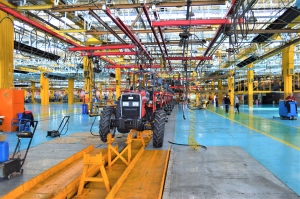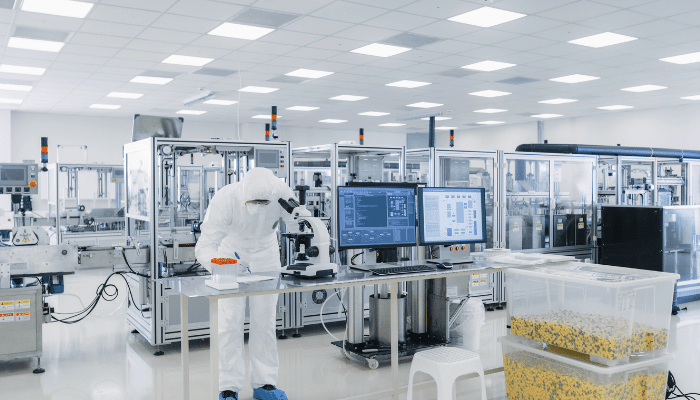What is a Smart Factory? In simple terms, a Smart Factory is about 1) eliminating paper and collecting data digitally in the factory, and 2) providing that data and information to everyone at all levels of the factory so they can operate the business on that data and information. There is a lot more that goes into it. However, those are the key differences between a factory and a smart factory. It is the digitization of manufacturing. The idea is for people to consume information from software instead of paper.
Many manufacturers have been around for decades. Having someone go through the plant floor, and collecting data with a pen and paper would be a common practice. This has worked for years in the past, but what is the value in changing now? Why do you need to change the way you run your company now if pen and paper have been working for you for the last 30 years?
What is the Value in a Smart Factory?
Established manufacturers that have been around for decades, are progressive, open to new ideas, and want to survive and thrive in the future are working towards becoming a digital factory. This is because in all honesty, if you don’t you will not progress in today’s world, and you will probably find yourself on a downward slope. Manufacturing is becoming more and more competitive with costs rising, operators more difficult to find, customers are more demanding, and more. Factories are trying to grow and at the same time, they’re working to do more with what they have.
Also, keep in mind that data from an ERP won’t be able to help here. Sure, ERP systems are very valuable and a key to a factory’s success. However, ERP systems are transactional systems that operate primarily in the office tracking customers, orders, inventory, inventory, and the like. However, the real “business” of a factory, the activities that give the factory its purpose are happening on the factory floor. So many companies are simply not tracking this data, or if they are, they’re doing it on paper and spreadsheets.
So what is the value in moving towards becoming a Smart Factory? Why does the way you gather data matter so much?
The value is real-time instant information that you get and how it can be shared with everyone in a smart factory. You will know right that second:
What are we running?
When did we run?
How were we running?
What did we produce?
This is the information that you really want to know. This information gives the operators and leaders the data they need to know to, again, do more with what they have. They will gain real-time, accurate visibility into what’s going on across the plant floor. They will be able to more easily find and eliminate inefficiencies. They can find bottlenecks, improve schedules and on-time deliveries, find the cause of scrap, and more. It can be available to you instantly and accurately. You will not get this data the next day, or the next week after the production cycle has already been finished long ago.
That is the huge value in having a Smart Factory. Old processes just do not work anymore. They might have been best-practice at some point in the past. With the on-going advancement of technology today, having a Smart Factory that can gather Smart Analytics is quickly becoming the industry standard.
The Teslas and Amazons of the world are companies that are way ahead of the game because they have been using this technology from the start. These are huge companies with huge budgets and revenue, so it is unrealistic to expect everyone to be able to afford the same type of systems that these companies have in place.
But let’s look briefly at what they did and are still doing. They have created cultures around getting data digitally and sharing that data and information across the organization. Mandates established by their leaders have forced, or better yet, enabled the people in those companies to look deeper into the organization, better understand how it’s running, and do all of that in real-time….and that data doesn’t only come from the ERP system.
As new Smart Factory technology is being developed (i.e., IIoT or the Industrial Internet of Things), it is becoming more readily available to small-medium-sized businesses over time. This is now why today Smart Factory Analytics is far from being a technology only available to the top 1%, it is essential for any sized manufacturer to remain competitive.
More Smart Factory Benefits
Moving your factory from paper to gathering data digitally is beneficial for so many reasons. It is a lot more than just a different way to record data, as we have established so far. I have touched on the topic briefly already, but the power of real-time analytics is a game-changer.
If you have access to real-time metrics, you can make adjustments on the fly. You will have a dashboard of different metrics that you can see, and use that information right then and there to improve your efficiency.
Think about a situation where you didn’t have real-time data to work with, and you had data recorded manually at the end of the day. The next day, you see this data, and you make an adjustment.
This process could be so much faster, and so much more efficient! If you had real-time data and smart factory infrastructure, you would have been able to see the data and make an adjustment. You would make that adjustment right away when you see the information. Then what? Then you see the new data and you might have to make another adjustment. This process keeps going on and on.
The number of adjustments you can make with a smart factory system in just one day could take months if you are working with pen and paper recording data every other day or every week.
These will also be very confident decisions being made, that can yield instant results backed by the data that the machine is continually giving you. Don’t base decisions off of data from last week, base it off of data from right now.
We have also established that humans make mistakes. Using a person to gather data means you get data later, and no matter who it is, there are going to be some errors from time to time. Stop spending so much time gathering data, let the machines do that, and spend your time analyzing data and learning your machines to make efficiency improvements.
Big Data Analytics
Big Data Analytics is another topic that ties in with the smart factory idea. Big Data is exactly what it sounds like: large data sets that can number into millions or even billions of rows. Is someone going to write all of this down on paper? Absolutely not.
These large amounts of data are only available with a smart factory. You are never going to gather this much data manually, but computer systems can do this on a regular basis. You can have access to extremely deep sets of data, that can tell you everything you need to know about your machines.
Analyzing all of this data together can prove to be very valuable, and help especially in these areas:
- Predicitve Machine Maintenance
- Machine Learning
- Product Quality
- Demand Forecasting
- Customer Experience
This is just the start, big data analytics provides us with insights into certain metrics that were not very easily measurable before. It all starts with turning your factory into a smart factory.
Conclusion
At the end of the day, old strategies are getting outdated. The world is getting digitized, and the manufacturing world is no exception. Smart Factory systems are the future. Technology is getting smarter, and also more attainable for everyone. Jump onto the new wave now and kick your company up a notch. Implement a smart factory system now so that you can get the most out of your equipment, and make confident data-driven decisions.








